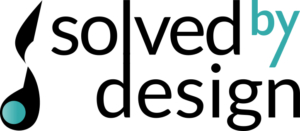2024 Theme
Designing for a Better World
Theme of “Designing for a Better World” with a focus on usability, sustainability, and inclusivity can be seen in various contexts. Here are some examples:
- Accessible Public Spaces: Architects and urban planners can design public spaces that are not only aesthetically pleasing but also accessible to individuals with disabilities. This includes ramps, elevators, and tactile paving to ensure that everyone, regardless of their physical abilities, can navigate public spaces easily.
- Eco-Friendly Product Packaging: Companies can focus on designing packaging that is not only visually appealing but also environmentally friendly. This could involve using sustainable materials, minimizing packaging waste, and providing clear instructions for proper disposal or recycling.
- Inclusive Technology: Software and app developers can prioritize inclusive design to create digital platforms that cater to a diverse range of users. This may involve features such as customizable interfaces, voice recognition, and text-to-speech options to ensure that individuals with varying abilities can use technology effectively.
- Community Engagement Platforms: Designing community engagement platforms with usability and inclusivity in mind can enhance civic participation. User-friendly interfaces, multilingual support, and accessibility features can encourage a broader and more diverse range of community members to actively participate in discussions and decision-making processes.
- Sustainable Transportation Solutions: Urban transportation systems can be designed with a focus on sustainability and inclusivity. This could include the integration of eco-friendly vehicles, well-planned public transit systems, and infrastructure that considers the needs of pedestrians and cyclists.
- Education Materials for All: Designing educational materials with inclusivity in mind ensures that learning resources are accessible to students with diverse learning styles and abilities. This could involve providing content in various formats, incorporating multimedia elements, and offering alternative formats for those with visual or auditory impairments.
Green Architecture: Architects can incorporate sustainable and energy-efficient design principles into buildings. This not only reduces the environmental impact but also creates spaces that promote well-being and comfort for the occupants.

In each of these examples, the emphasis on usability, sustainability, and inclusivity contributes to a better, more accessible world for everyone.











